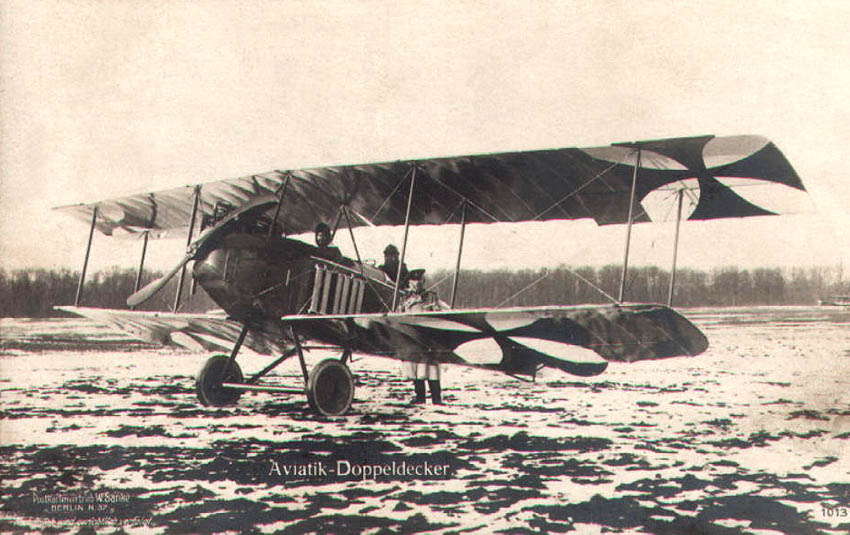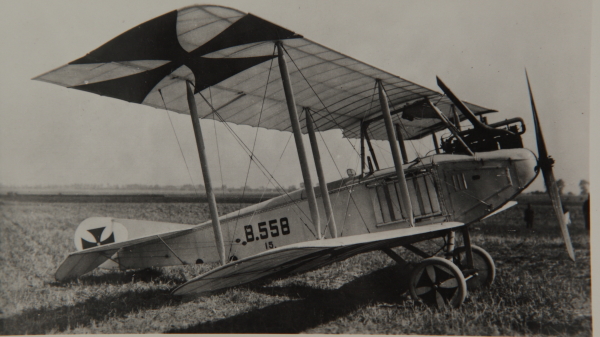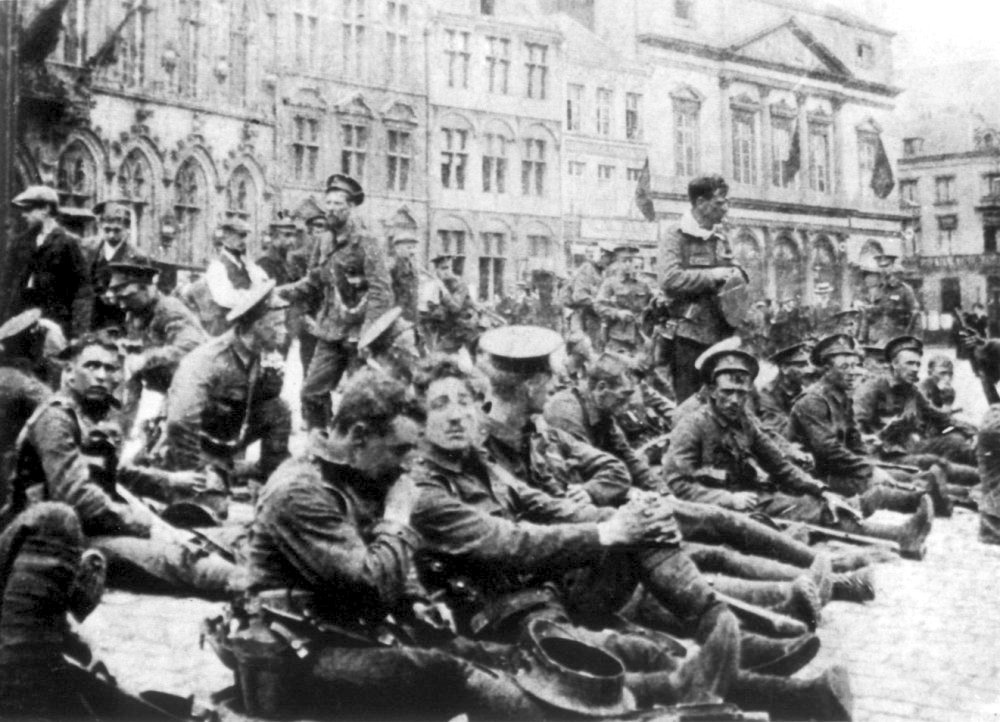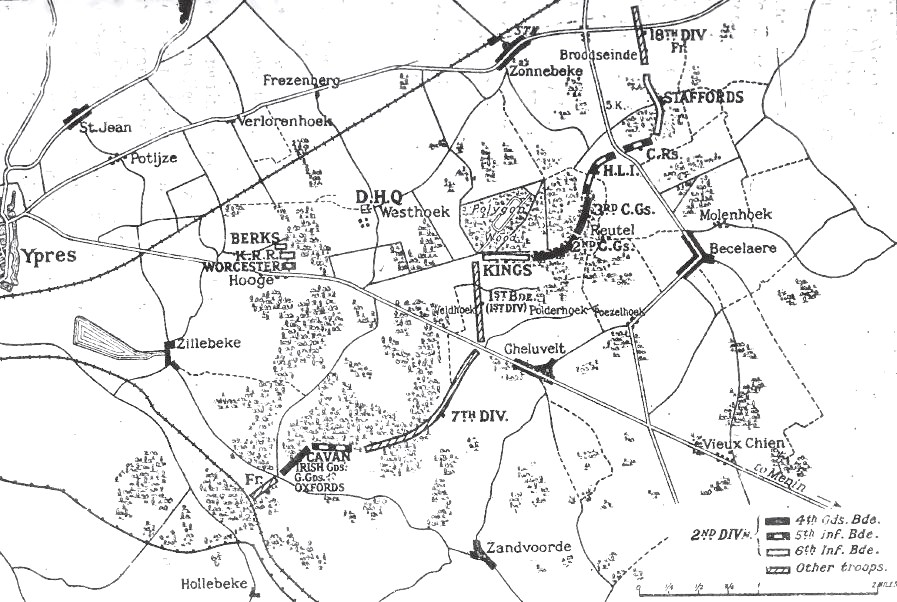|
Kaghol 3
The England Squadron (German language: ''Englandgeschwader''), officially ''Kagohl 3'' or later ''Bogohl 3'', was a squadron of the Imperial German Army Air Service, formed in late 1916 during the First World War for the purpose of the strategic bombing of the United Kingdom and specifically London. The first wikt:air raid, air raid of the squadron on 25 May 1917 was unable to reach London, but bombed the coastal town of Folkestone instead. On 13 June, the squadron bombed London in daylight causing nearly 600 casualties. A further raid in July prompted reinforcement and reorganisation of the capital's air defences, but German losses had also caused a switch to bombing by night. On the night of 3/4 September, the squadron raided coastal towns in Kent and on the following night, London was attacked. Raids continued into the spring of 1918, supported by another squadron operating larger aircraft. The final attack was at the end of May, by which time more than 2,800 people had been ... [...More Info...] [...Related Items...] OR: [Wikipedia] [Google] [Baidu] |
Luftstreitkräfte
The ''Deutsche Luftstreitkräfte'' (, German Air Combat Forces)known before October 1916 as (The Imperial German Air Service, lit. "The flying troops of the German Kaiser’s Reich")was the air arm of the Imperial German Army. In English-language sources it is usually referred to as the Imperial German Air Service, although that is not a literal translation of either name. German naval aviation, naval aviators of the were an integral part of the Imperial German Navy (). Both military branches operated aeroplanes, observation balloons and airships. Founding The Imperial German Army created an experimental balloon company inspired by the American balloon corps they had seen while observing the American Civil War, with varying forms of organisation from 1884 to 1901 until a Balloon Battalion was finally formed. The rapid development of aeronautics led to trials of airships and the choice of rigid types built by Luftschiffbau Zeppelin, Zeppelin and List of Schütte-Lanz airships, ... [...More Info...] [...Related Items...] OR: [Wikipedia] [Google] [Baidu] |
Aviatik B
Automobil und Aviatik AG was a German aircraft manufacturer during World War I. The company was established at Mülhausen (today in France) in 1909 and soon became one of the country's leading producers of aircraft. It relocated to Freiburg in 1914 and to Leipzig in 1916 and established a subsidiary in Vienna as Österreichisch-Ungarische Flugzeugfabrik Aviatik. During the war, the company became best known for its reconnaissance aircraft, the B.I and B.II, although the Austro-Hungarian subsidiary also produced a number of its own designs, including fighters such as the D.I. History The company was founded in December 1909 by the Alsatian Georges Chatel. II cover page It started with the license-production of French aircraft; Hanriot monoplanes and Farman biplanes. From 1912, the factory started building its own successful biplanes, designed by Robert Wild. Just at the beginning of World War One, on 1 August 1914 the company was relocated to Freiburg due to French threat, ... [...More Info...] [...Related Items...] OR: [Wikipedia] [Google] [Baidu] |
Veurne
Veurne (; , ) is a City status in Belgium, city and Municipalities in Belgium, municipality in the Belgium, Belgian Provinces of Belgium, province of West Flanders. The municipality comprises the town of Veurne proper and the settlements of , , , , , Houtem, , , Wulveringem, and . History Origins up to the 15th century Veurne, in Latin ''List of Latin place names in Continental Europe, Furna'', is first found in 877 as a possession of the Saint Bertin Abbey in Saint-Omer. Around 890 AD, it was noted as a successful fortification against the Viking raids. It soon was placed at the head of the castellany of Veurne, a large territory counting 42 parishes and some 8 half-independent parishes, owing allegiance to the Count of Flanders. Veurne became a city in the 12th century. During the following century, trade with England flourished. In 1270, however, the relations with England came to a standstill and the city's economy went into a long decline; hence the nickname of the Veu ... [...More Info...] [...Related Items...] OR: [Wikipedia] [Google] [Baidu] |
British Expeditionary Force (World War I)
The British Expeditionary Force (BEF) was the formation of British army on the Western Front during World War I. They were sent by Britain to France in 1914 to aid in resisting the German invasion. Originally sent as six divisions the British Army to the Western Front during the First World War. Planning for a British Expeditionary Force began with the 1906–1912 Haldane Reforms of the British Army carried out by the Secretary of State for War Richard Haldane following the Second Boer War (1899–1902). The term ''British Expeditionary Force'' is often used to refer only to the forces present in France prior to the end of the First Battle of Ypres on 22 November 1914. By the end of 1914—after the battles of Mons, Le Cateau, the Aisne and Ypres—the existent BEF had been almost exhausted, although it helped stop the German advance.An alternative endpoint of the BEF was 26 December 1914, when it was divided into the First and Second Armies (a Third, Fourth and ... [...More Info...] [...Related Items...] OR: [Wikipedia] [Google] [Baidu] |
Dunkirk
Dunkirk ( ; ; ; Picard language, Picard: ''Dunkèke''; ; or ) is a major port city in the Departments of France, department of Nord (French department), Nord in northern France. It lies from the Belgium, Belgian border. It has the third-largest French harbour. The population of the commune in 2019 was 86,279. Etymology and language use The name of Dunkirk derives from West Flemish 'dune' or 'dun (fortification), dun' and 'church', thus 'church in the dunes'. A smaller town 25 km (15 miles) farther up the Flemish coast originally shared the same name, but was later renamed Oostduinkerke(n) in order to avoid confusion. Until the middle of the 20th century, French Flemish (the local variety of Dutch language, Dutch) was commonly spoken. History Middle Ages A fishing village arose late in the tenth century, in the originally flooded coastal area of the English Channel south of the Western Scheldt, when the area was held by the County of Flanders, Counts of Flanders, va ... [...More Info...] [...Related Items...] OR: [Wikipedia] [Google] [Baidu] |
First Battle Of Ypres
The First Battle of Ypres (, , – was a battle of the First World War, fought on the Western Front (World War I), Western Front around Ypres, in West Flanders, Belgium. The battle was part of the First Battle of Flanders, in which German Army (German Empire), German, French Army in World War I, French, Belgian Land Component, Belgian armies and the British Expeditionary Force (World War I), British Expeditionary Force (BEF) fought from Arras in France to Nieuwpoort, Belgium, Nieuwpoort (Nieuport) on the Belgian coast, from 10 October to mid-November. The battles at Ypres began at the end of the Race to the Sea, reciprocal attempts by the German and Franco-British armies to advance past the northern flank of their opponents. North of Ypres, the fighting continued in the Battle of the Yser between the German 4th Army (German Empire), 4th Army, the Belgian army and French marines. The fighting has been divided into five stages, an encounter battle from 19 to 21 October, the B ... [...More Info...] [...Related Items...] OR: [Wikipedia] [Google] [Baidu] |
Manfred Von Richthofen
Manfred Albrecht Freiherr von Richthofen (; 2 May 1892 – 21 April 1918), known in English as Baron von Richthofen or the Red Baron, was a fighter pilot with the German Air Force during World War I. He is considered the ace-of-aces of the war, being officially credited with 80 air combat victories. Originally a cavalryman, Richthofen transferred to the Air Service in 1915, becoming one of the first members of fighter squadron '' Jagdstaffel 2'' in 1916. He quickly distinguished himself as a fighter pilot, and during 1917 became the leader of ''Jasta 11''. Later he led the larger fighter wing '' Jagdgeschwader I'', better known as "The Flying Circus" or "Richthofen's Circus" because of the bright colours of its aircraft, and perhaps also because of the way the unit was transferred from one area of Entente air activity to another – moving like a travelling circus, and frequently setting up in tents on improvised airfields. By 1918, Richthofen was regarded as a nati ... [...More Info...] [...Related Items...] OR: [Wikipedia] [Google] [Baidu] |
Hermann Göring
Hermann Wilhelm Göring (or Goering; ; 12 January 1893 – 15 October 1946) was a German Nazism, Nazi politician, aviator, military leader, and convicted war criminal. He was one of the most powerful figures in the Nazi Party, which governed Germany from 1933 to 1945. He also served as ''Oberkommando der Luftwaffe, Oberbefehlshaber der Luftwaffe'' (Supreme Commander of the Air Force), a position he held until the final days of the regime. He was born in Rosenheim, Kingdom of Bavaria, Bavaria. A veteran World War I fighter pilot Flying aces, ace, Göring was a recipient of the . He served as the last commander of Jagdgeschwader 1 (World War I), ''Jagdgeschwader'' 1 (JG I), the fighter wing once led by Manfred von Richthofen. An early member of the Nazi Party, Göring was among those wounded in Adolf Hitler's failed Beer Hall Putsch in 1923. While receiving treatment for his injuries, he developed an addiction to morphine that persisted until the last year of his life. Aft ... [...More Info...] [...Related Items...] OR: [Wikipedia] [Google] [Baidu] |
Self-loading Rifle
A self-loading rifle or auto-loading rifle is a rifle with an action using a portion of the energy of each cartridge fired to load another cartridge. Self-loading pistols are similar, but intended to be held and fired by a single hand, while rifles are designed to be held with both hands and fired from the shoulder. Evolution Early breech-loading firearms were single-shot devices holding a single cartridge. When that cartridge had been fired, the person using the firearm would remove the empty cartridge, find another cartridge from a pocket or other carrying apparatus, and load that cartridge into the firearm chamber before another shot could be fired. Later repeating rifles and pistols were equipped with a magazine holding several cartridges with a spring to push those cartridges into position to be loaded by manually operating the action of the firearm—as by a lever, bolt, or pump mechanism—thus avoiding the procedure of locating and manually positioning each new cartridg ... [...More Info...] [...Related Items...] OR: [Wikipedia] [Google] [Baidu] |
Carrier Pigeon
The homing pigeon is a variety of domestic pigeon (''Columba livia domestica''), selectively bred for its ability to find its way home over extremely long distances. Because of this skill, homing pigeons were used to carry messages, a practice referred to as " pigeon post". Until the introduction of telephones, they were used commercially to deliver communication; when used during wars, they were called "war pigeons". The homing pigeon is also called a mail pigeon or messenger, and colloquially a homer. Perhaps most commonly, the homing pigeon is called a carrier pigeon; this nomenclature can be confusing, though, since it is distinct from the English carrier, an ancient breed of fancy pigeon. Modern-day homing pigeons do have English carrier blood in them because they are in part descendants of the old-style carriers. The domestic pigeon is derived from the wild rock dove (''Columba livia'' sspp.); the rock dove has an innate homing ability, meaning that it will generally r ... [...More Info...] [...Related Items...] OR: [Wikipedia] [Google] [Baidu] |
Gistel
Gistel () is a municipality and city located in the Belgian province of West Flanders. Following local government boundary reforms in 1971 and 1977, the municipality has comprised not only Gistel, but also the towns of Moere, Snaaskerke and Zevekote. On January 1, 2006 the Gistel municipality had a total registered population of 11,125, of whom more than 8,000 were in Gistel itself. The total area is 42.25 km² which gives a population density of 263 inhabitants per km². The German town of Büdingen is its twin town. Celebrity connections The most famous inhabitant of Gistel was Sylvère Maes, winner of the Tour de France in 1936 and 1939. Another former resident of Gistel is Johan Museeuw, also famous cyclist, but now retired. He won Paris–Roubaix three times. In 2011, a museum opened in Gistel, in honor of Maes and Museeuw. A former mayor, Bart Halewyck, was the first hacker ever convicted in Belgium after the ' Bistel Trial' in 1990. He was already alderman an ... [...More Info...] [...Related Items...] OR: [Wikipedia] [Google] [Baidu] |
Erich Von Falkenhayn
Erich Georg Sebastian Anton von Falkenhayn (11 September 1861 – 8 April 1922) was a German general and Ottoman Field Marshal who served as Prussian Minister of War and Chief of the German General Staff during the First World War. Falkenhayn replaced General Helmuth von Moltke the Younger in September 1914 after his invasion of France was stopped at the First Battle of the Marne and was in turn removed on 29 August 1916 after the failure of his offensive strategy in the west at the Battle of Verdun, the opening of the Battle of the Somme, the Brusilov Offensive and the Romanian entry into the war. Having planned to win the war before 1917, the German army was reduced to hanging on. Falkenhayn was given important field commands in Romania and Syria. As a commander in the Middle East, he prevented a planned Ottoman deportation of Jews from Palestine. His reputation as a war leader was attacked in Germany during and after the war, especially by the faction supporting Field ... [...More Info...] [...Related Items...] OR: [Wikipedia] [Google] [Baidu] |







